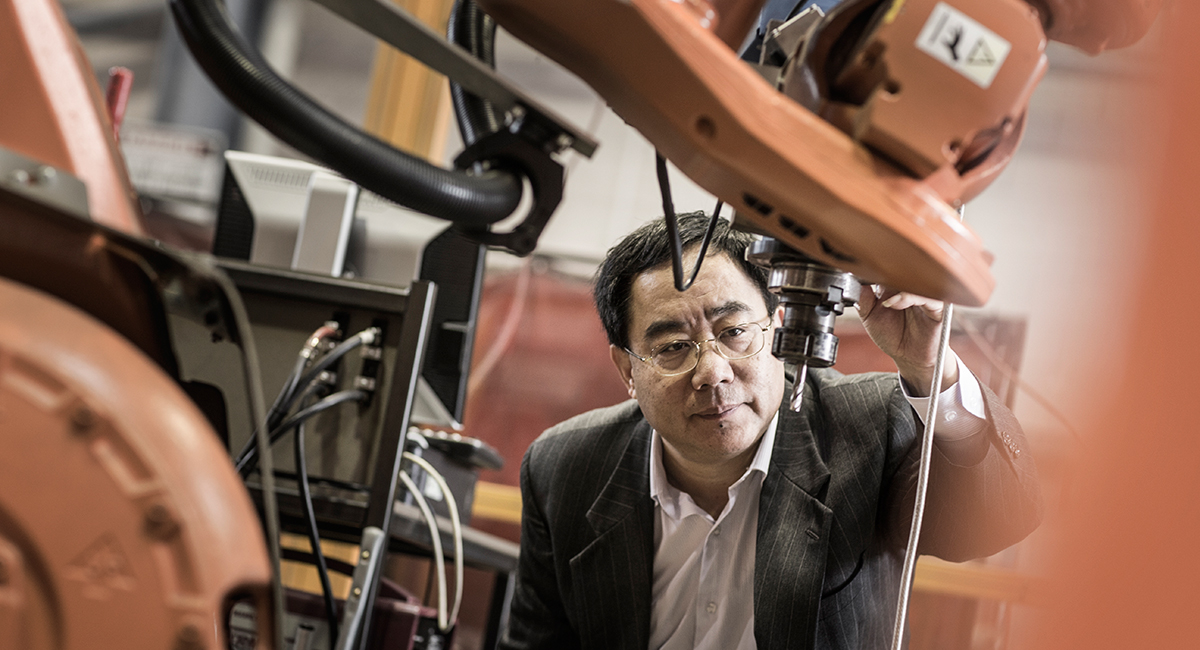July 21, 2015
Developing advanced steels for a green nuclear-powered future
A UOW researcher is working on new materials that could help make green nuclear power possible.
Professor Huijun Li, from UOW’s Faculty of Engineering and Information Sciences (EIS), is one of 12 recently promoted and appointed professors who will be sharing their research with the public and industry at the second UOW Big Ideas Festival on 25 August.
So-called ‘green’ nuclear power is the process of fusion: where hydrogen nuclei collide, fuse into heavier helium atoms and release tremendous amounts of energy.
Fusion is based on Albert Einstein’s theory of special relativity (E=mc2) and it’s the process at work in the core of the sun. It requires hydrogen fuel to power the reaction, which is abundant and cheap to process.
Conventional nuclear energy involves a process called fission - the splitting of a large atom into two or more smaller ones. It is powered by expensive uranium and creates a lot of nuclear waste that requires a complex process of management and storage.
The first fusion experiments were conducted in the 1930s and by the mid-1950s "fusion machines" were operating in the Soviet Union, the United Kingdom, the United States, France, Germany and Japan.
More recently, a large-scale scientific experiment in France called ITER is building the biggest fusion reactor in history, which will be used to resolve critical scientific and technical issues of fusion energy.
Professor Li said the one key challenge in building a fusion reactor was the need for materials that can handle extreme working environment involving high temperatures, and high-energy neutron and helium radiation.
“I have been working on steels for more than 10 years and my research aims to develop advanced steels that have good anti-creep performance in high temperature environments and also have good resistance to radiation damage,” Professor Li said.
“At the same time, I’m investigating the advanced welding and joining technologies for fabricating the first wall structure of a fusion reactor.”
Professor Li said a successful fusion reactor would be capable of supplying electricity for 500,000 people for one year using just 1 kilogram of fusion fuel.
“As we all know, energy is vital for modern human society, and at the moment, we are heavily reliant on fossil fuels, such as coal, oil and gas, to produce electricity. The natural resources of fossil fuel are limited, and they will soon be exhausted,” he said.
“Conventional nuclear power generators, in theory, are capable of supplying base load electricity, but they also produce large amount of high level nuclear waste which will remain radioactive for tens of thousands of years.
“If we can achieve commercialisation of fusion reactors, the energy problem for humankind is solved. Everyone needs electricity, as simple as that. Everyone will benefit from the success of this research.”
The Big Ideas Festival will be held on Tuesday 25 August from 5pm to 9pm at the UOW University Hall. Register to attend this free event.
Professor Huijun Li biography
Professor Li has 19 years research experience in materials science and engineering. He has published more than 250 papers in the fields of welding metallurgy, new alloy development, surface engineering, nuclear materials and microstructure characterisation. Professor Li is currently leading the Welding Engineering Research Group at UOW and is supervising (or co-supervising) 12 PhD students and seven postdoc students. He was awarded the Australian Museum Eureka Prize for Outstanding Science in Safeguarding Australia in 2013, an Australia Endeavour Fellowship in 2014, and a Defence Materials Technology Centre -- Capability Improvement Award in 2014.
